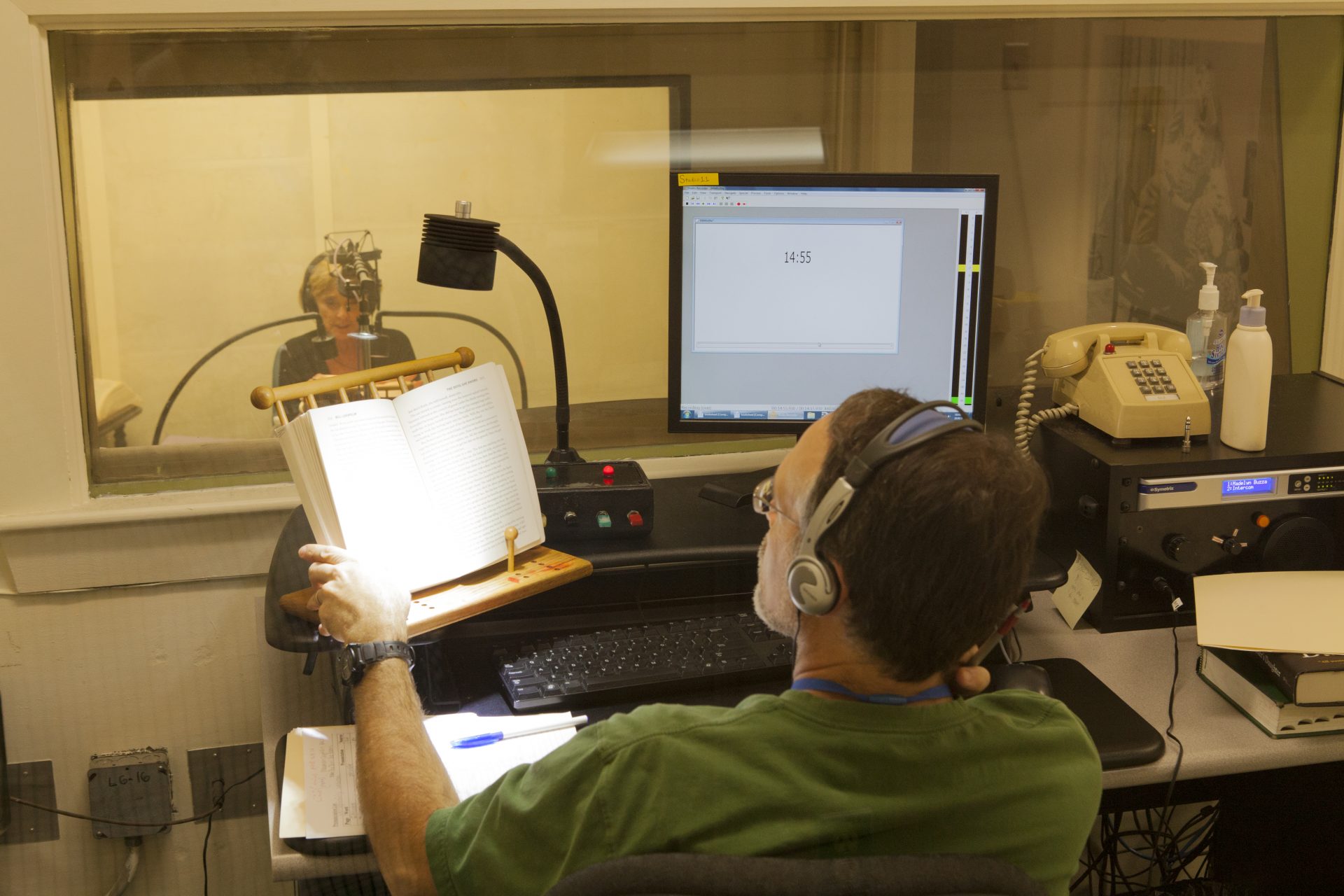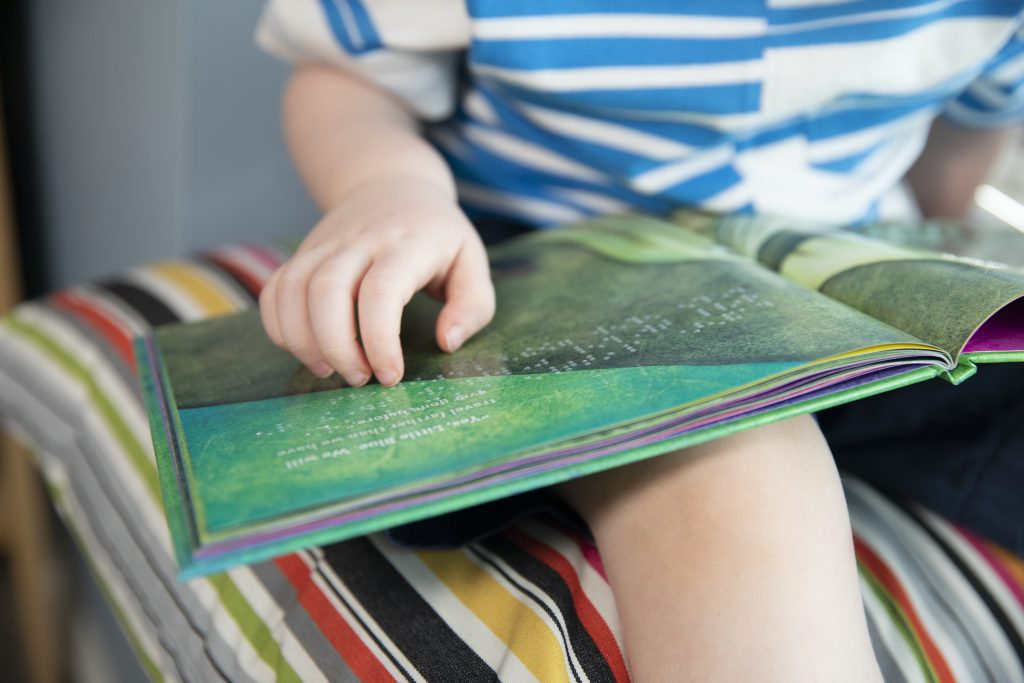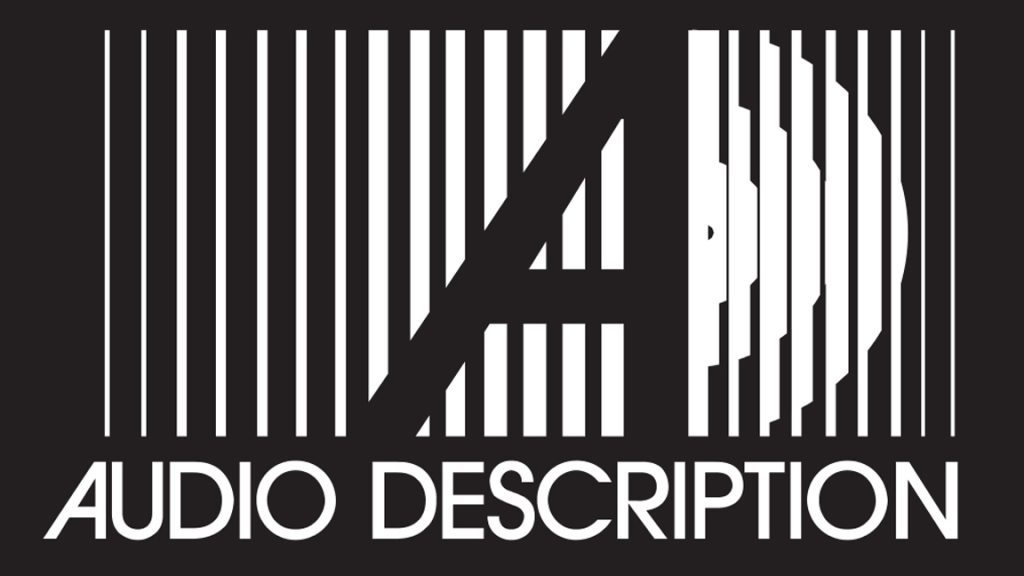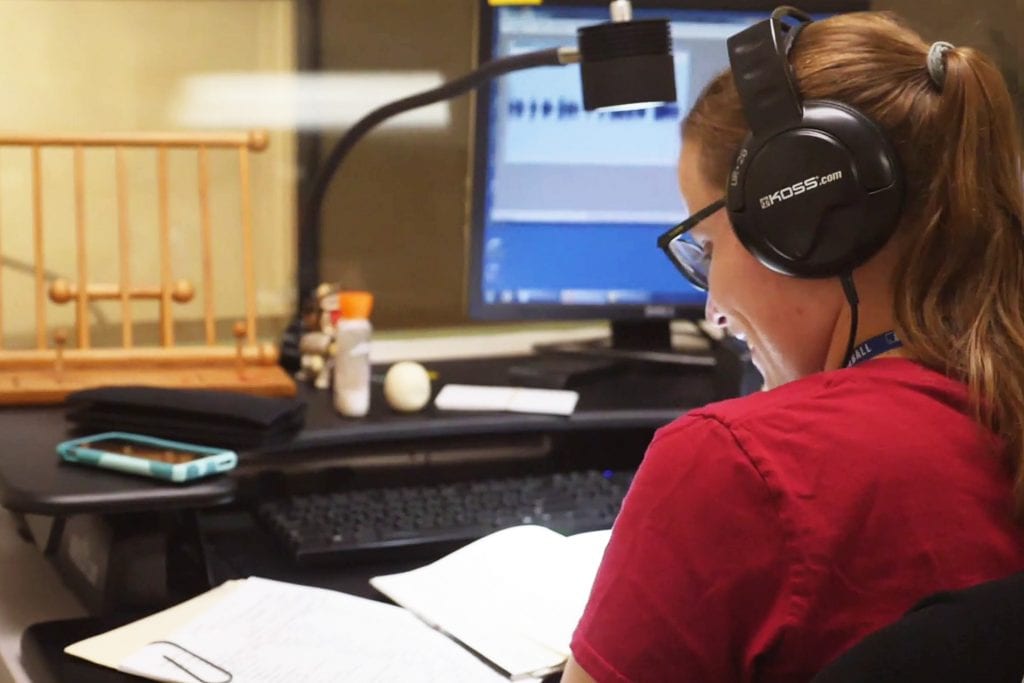APH Behind the Scenes: The Talking Book Studio

Have you ever wondered how talking books are produced for people who are blind and have low vision? We spoke with Studio Director Maggie Davis about how the Talking Book Studio serves APH and the field.
What does the Studio do?
The Studio records talking books for the National Library Service for the Blind and Print Disabled (NLS). “Between recording and producing full books in our studios and converting commercial audio to accessible DTBs (digital talking books)—all for NLS—we provide about 1,000 talking books per year,” said Maggie. In addition, the Studio records audio descriptions for educational videos for the Digital Captioned Media Program (DCMP). Narrators also contribute their talents to many in-house projects and products in production at APH.
Department Structure
Maggie has served as the Studio Director for just over a year and been with the APH for 8 years. She said, “As Studio Director, I manage an incredibly talented team of Audio Book Editors and professional talking book Narrators, and I oversee the production of our talking books and other recorded material. We have a team of 7 full-time Audio Book Editors and about 15 part-time Narrators. We have a variety of talents in the Studio, with some of our editors contributing their knowledge of language/research, some their experience with running audio equipment, and others their proficiency with creating the finished audiobooks. Our narrators come from a variety of backgrounds and training as well, including experience in the theater and as news/radio broadcasters—you’ve likely heard some of our narrators if you’ve traveled through the Louisville airport, watched the news, attended a play, or listened to the radio.”
Book Production
In the past, the Studio referenced print books to create talking books. Today, the Studio works solely with e-books. When the Studio receives a book to produce, Maggie casts the narrator. She explained, “Casting is one of the fun, albeit tricky, parts of the job. Familiarity with our available voices is a must, as every reader has their own unique sound and skillsets. We have some readers who specialize in nonfiction, some who only read fiction, and some whose energy is a good fit for children’s books. For the most part, we only cast one narrator per individual book, although there are sometimes books which require us to split the narration between at least 2 appropriate voices.” Audio Book Editors prepare the book for recording by researching the text and deciding how the finished talking book will be structured for navigation. Kept in digital file folders, this research includes scanning the book to locate any content that might prove challenging for the narrator, researching that content via an appropriate source, and keeping track of the pronunciation options. For a relatively simple novel, the research might be only a handful of terms—usually the author’s name, character names, and any place or brand names that might appear in the text. A more complex book could have pages and pages of research to maintain, whether it be a sprawling history book, a globe-trotting thriller, or a highly specialized nonfiction book.
Originally recorded on records and then on tape, the Studio now records books digitally. An average book takes about 1-2 weeks to record, depending on length and complexity. Most narrators read for 1-2 sessions per day, for a maximum of 4 hours per day. The Audio Book Editor acts as the director of each recording session, providing information about the text, pronunciation when needed, and offering feedback on the performance itself.
Proofreaders listen to the audio at high speed and note any corrections that need to be made. The book returns to the original Audio Book Editor, who goes back into the studio with the narrator to correct all mistakes. Afterward, the proofreader creates the DTB by using software designed specifically for turning the audio files into navigable talking books for NLS. Maggie said, “Our DTBs are typically more navigable than a commercial audiobook, in that we mark up the book extensively to make it easier for the reader to locate content. Our markup can be very detailed, which is tedious in production, but makes it a far more valuable product for the end-user.” An average length book goes through the entire process in about two months. Completed DTBs are submitted to NLS, undergo a rigorous review process to ensure high quality, and are then made available for users. NLS customers can listen to these books using a special player designed for DTBs or via digital download.
Maggie said, “Our recording work offers a vital service as there’s nothing that levels the playing field of accessibility quite like audio. There is no learning curve for using audio, whether the end-user is young or old, sighted or visually impaired, and there’s no comparable replacement for the human voice—at least in the production of audiobooks. We have a ton of talent quietly passing in and out of our department daily, and a long, proud history of audiobook production. I am grateful every day for an immensely talented team without which there’d be no APH Studio.”
Share this article.
Related articles

APH’s Partnership with Dolly Parton’s Imagination Library Brings Literacy Resources to All Students
Every book is a gateway to learning and exploration. Whether you are listening to a novel or guiding your fingers...

Adventures in Audio Description
Have you ever heard an audio described movie or TV program? Maybe it was on a streaming service or in...

Using Audio for Accessibility
How can your organization or business reach someone who is blind but may not be braille literate? Many Americans who...
